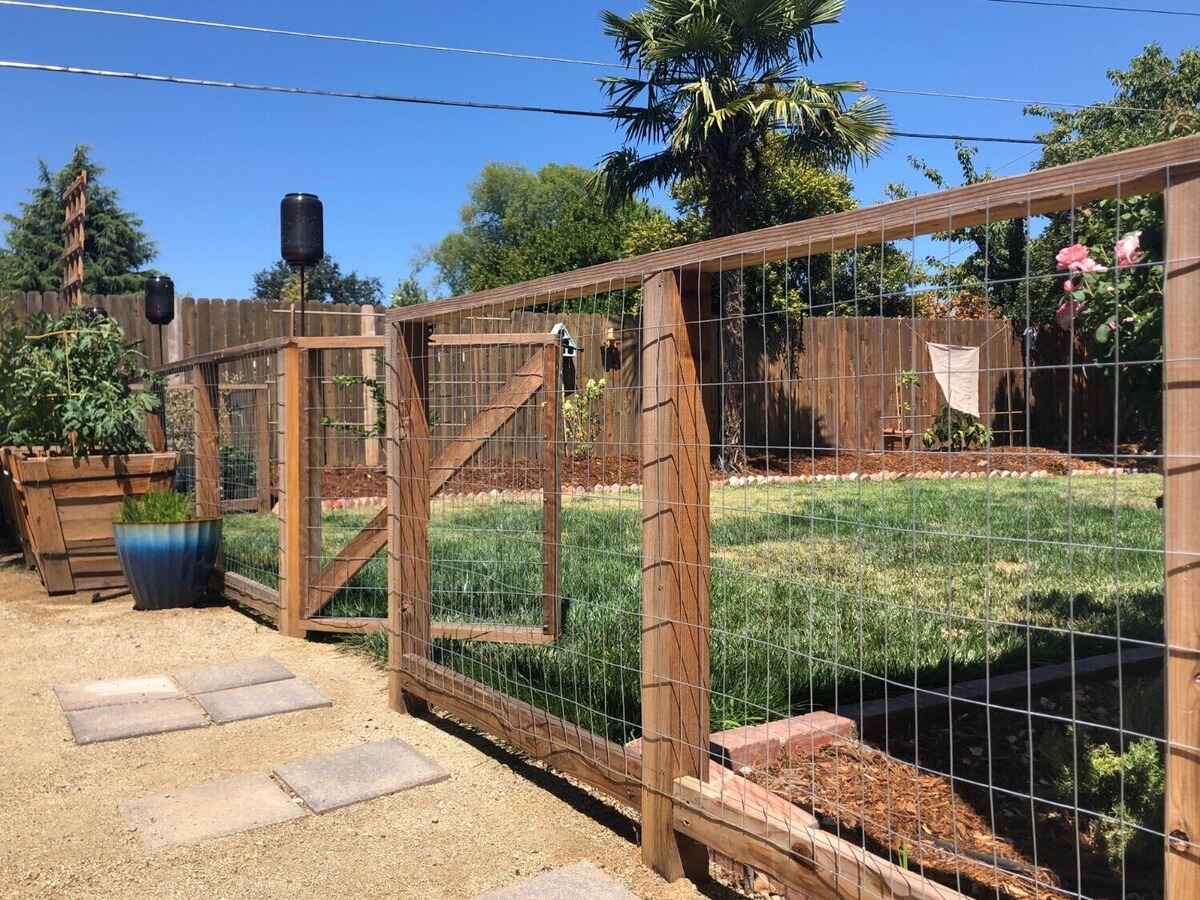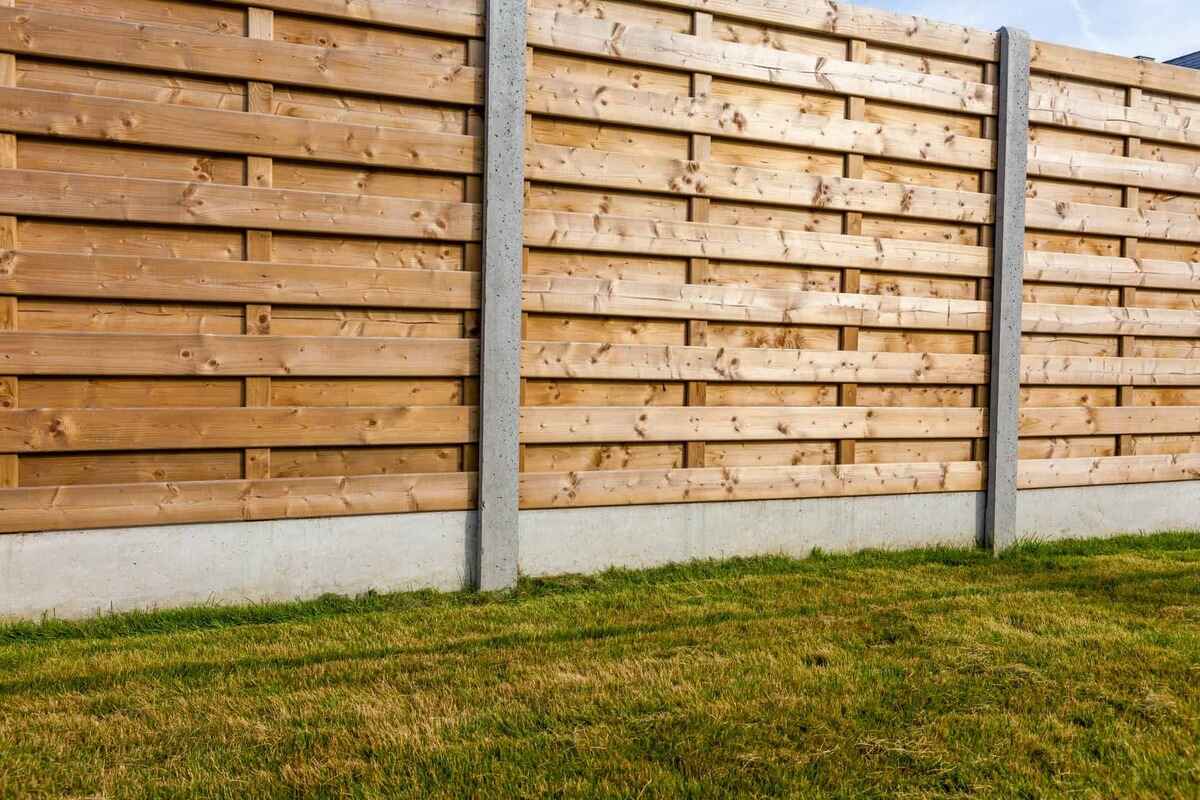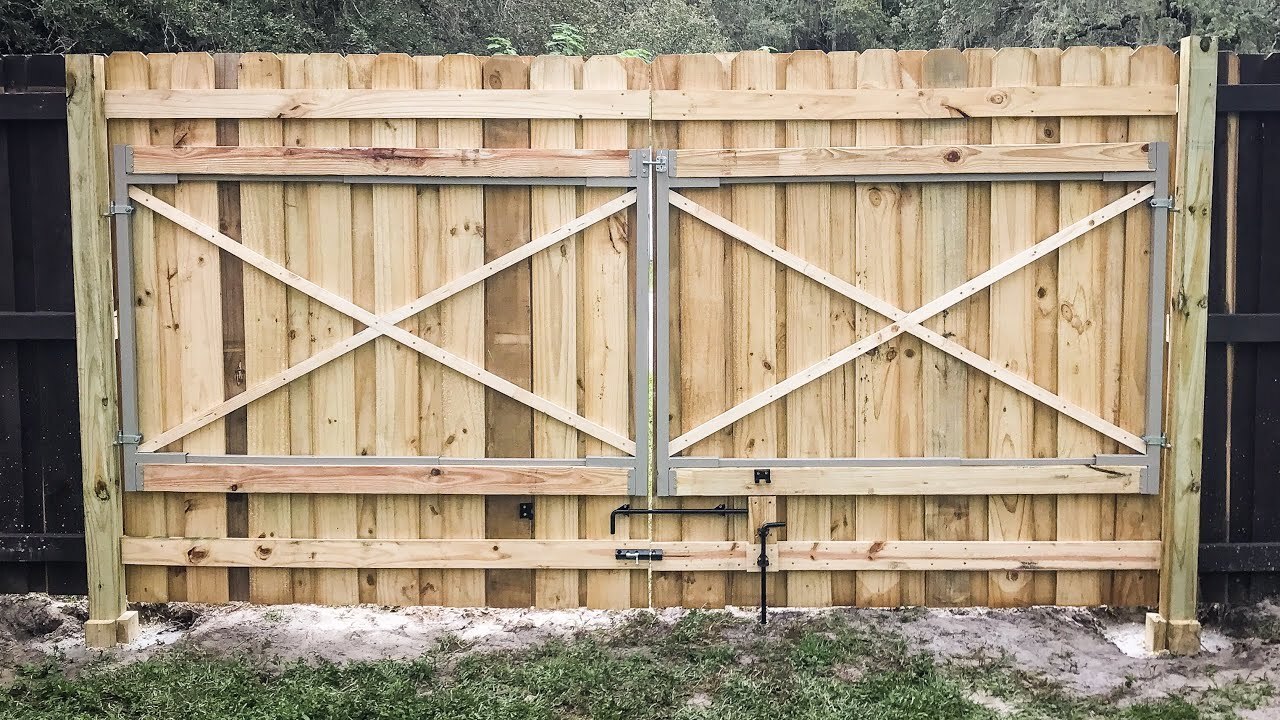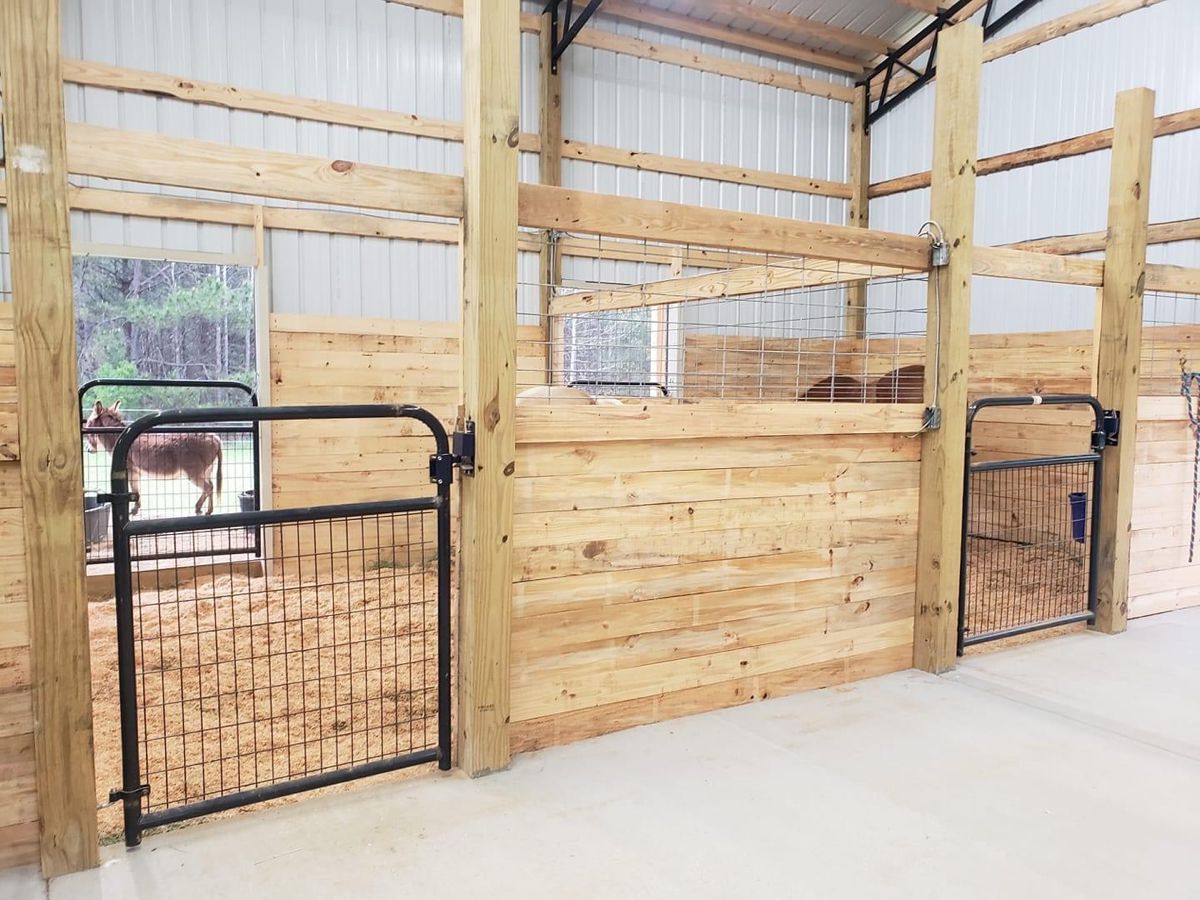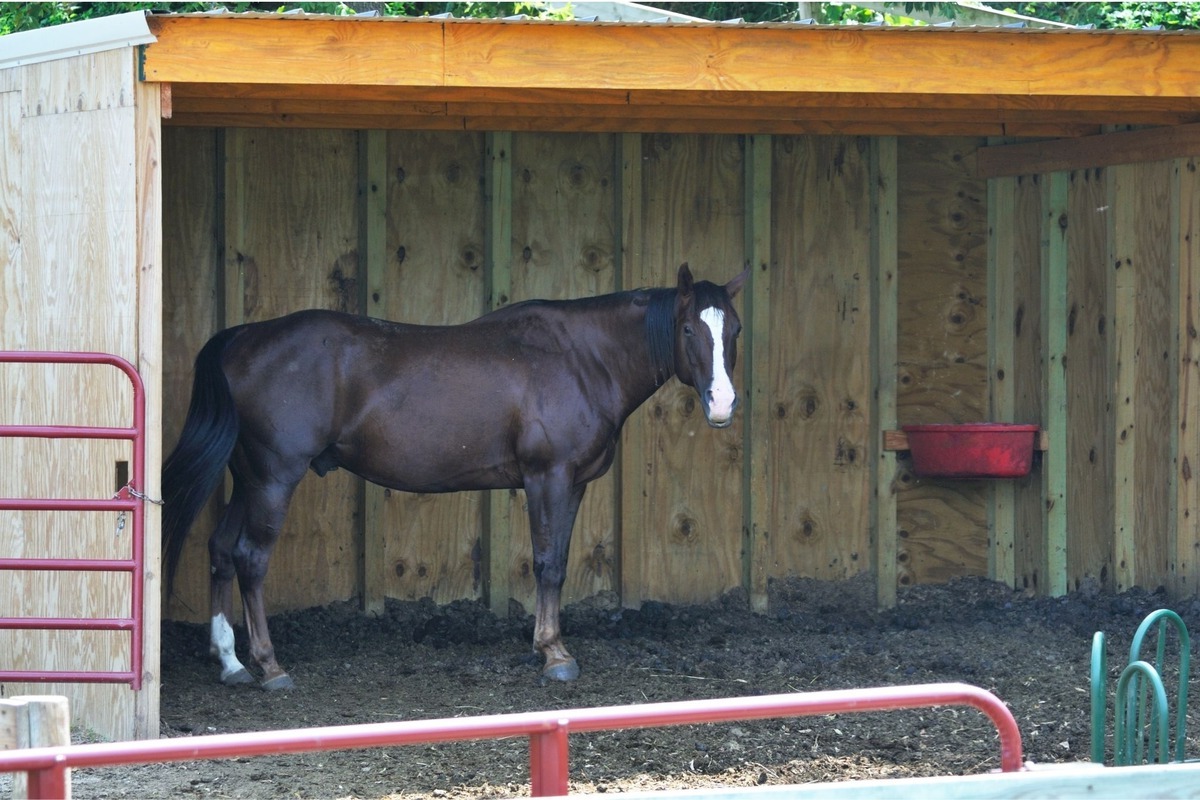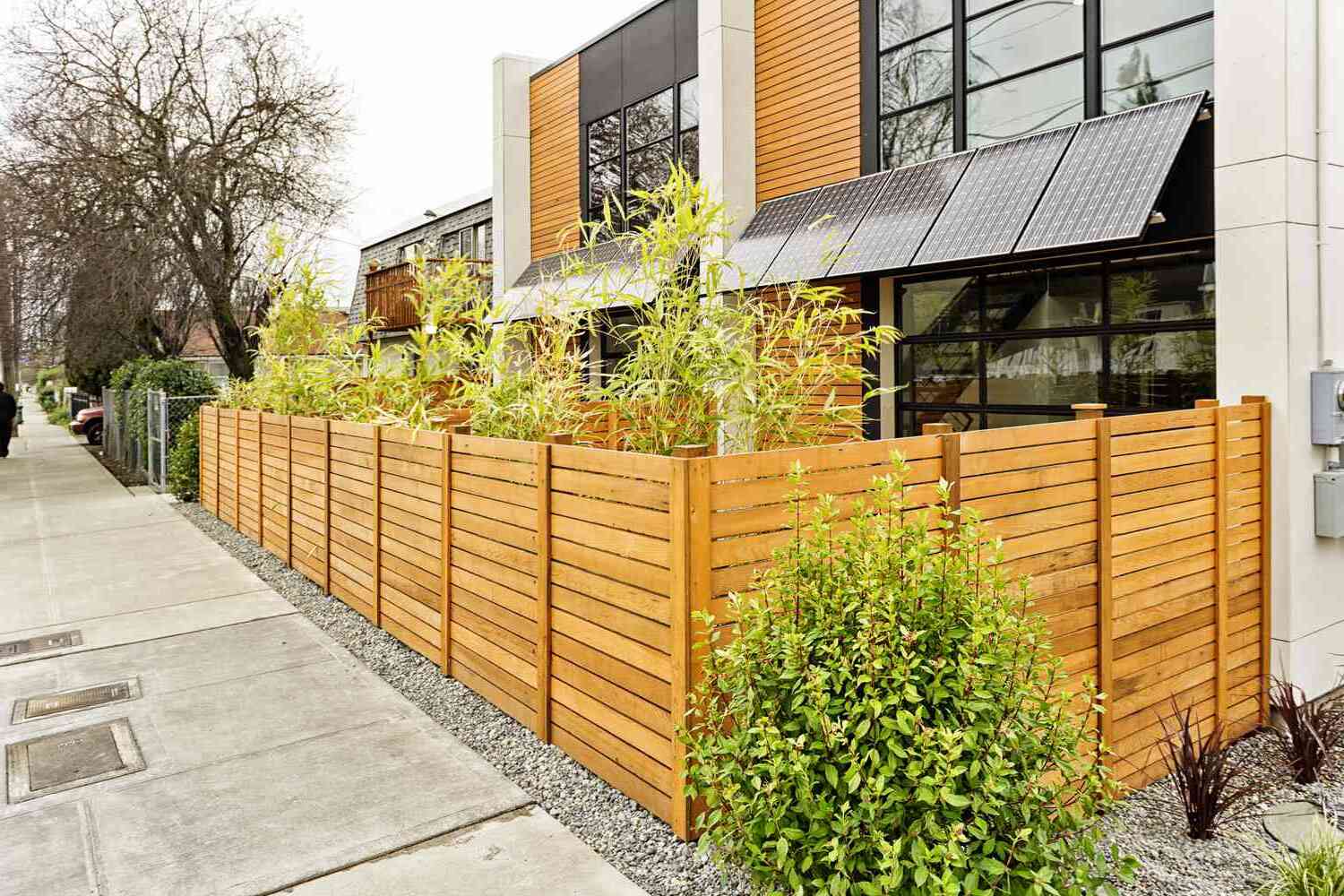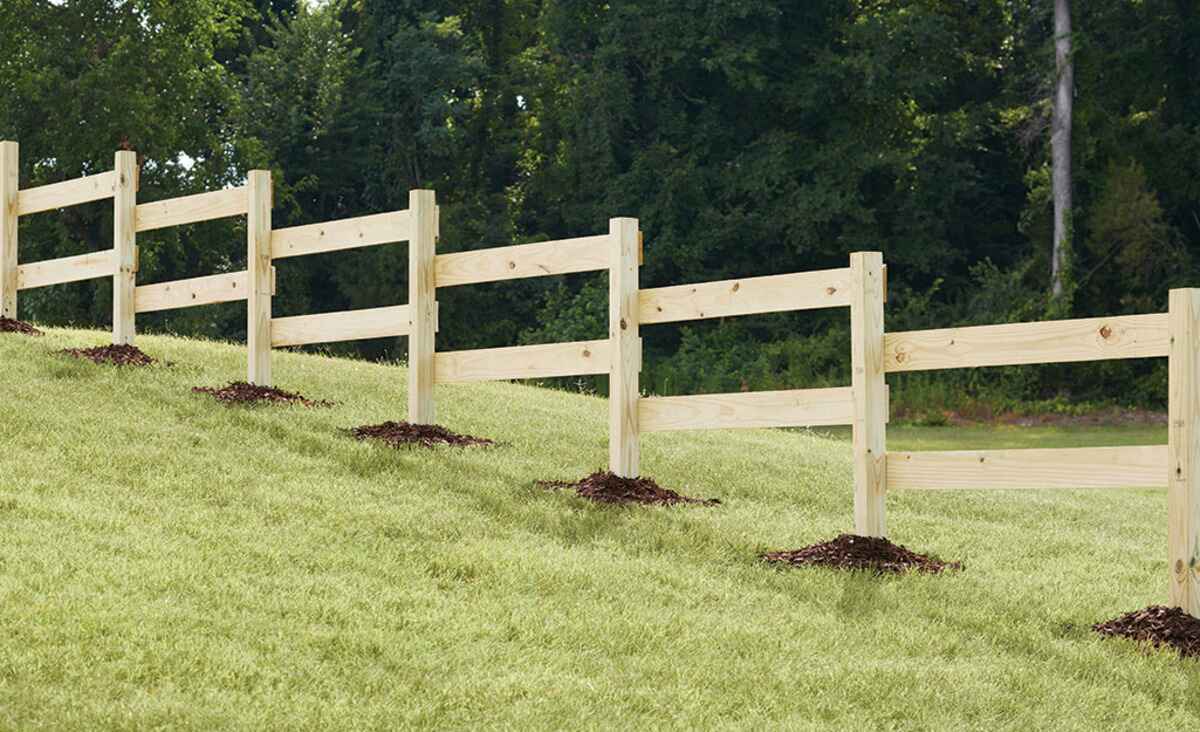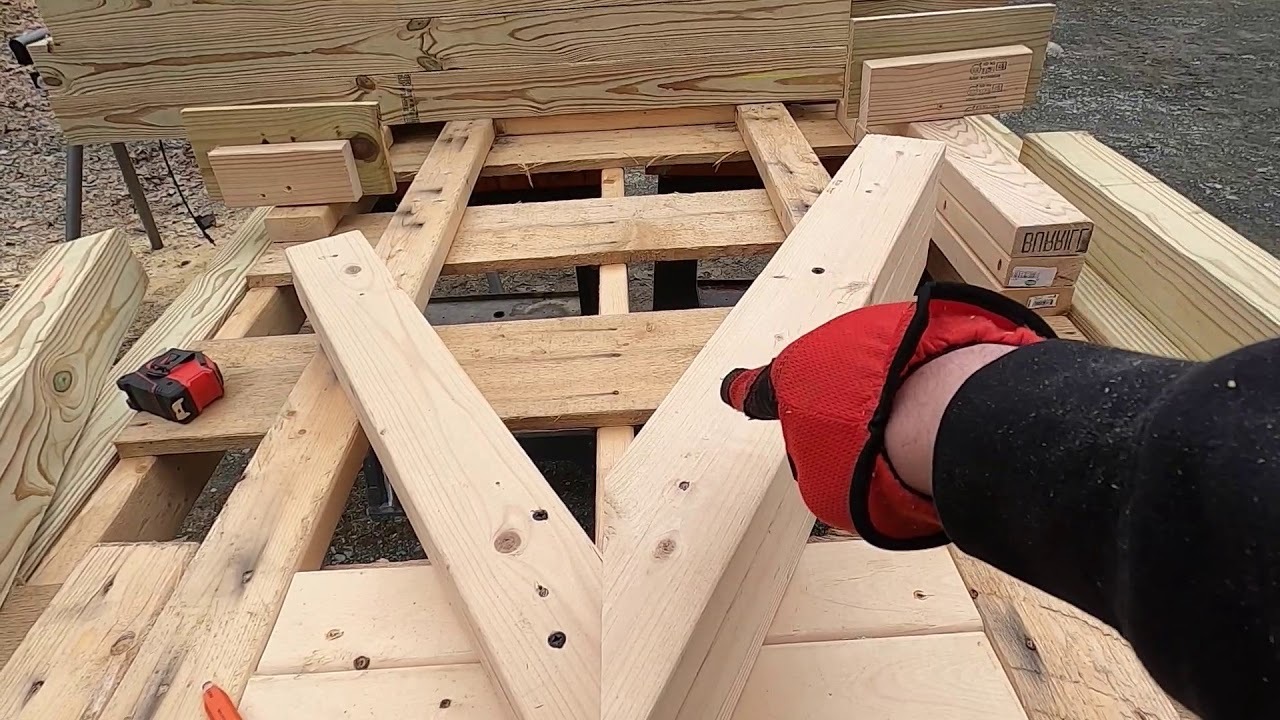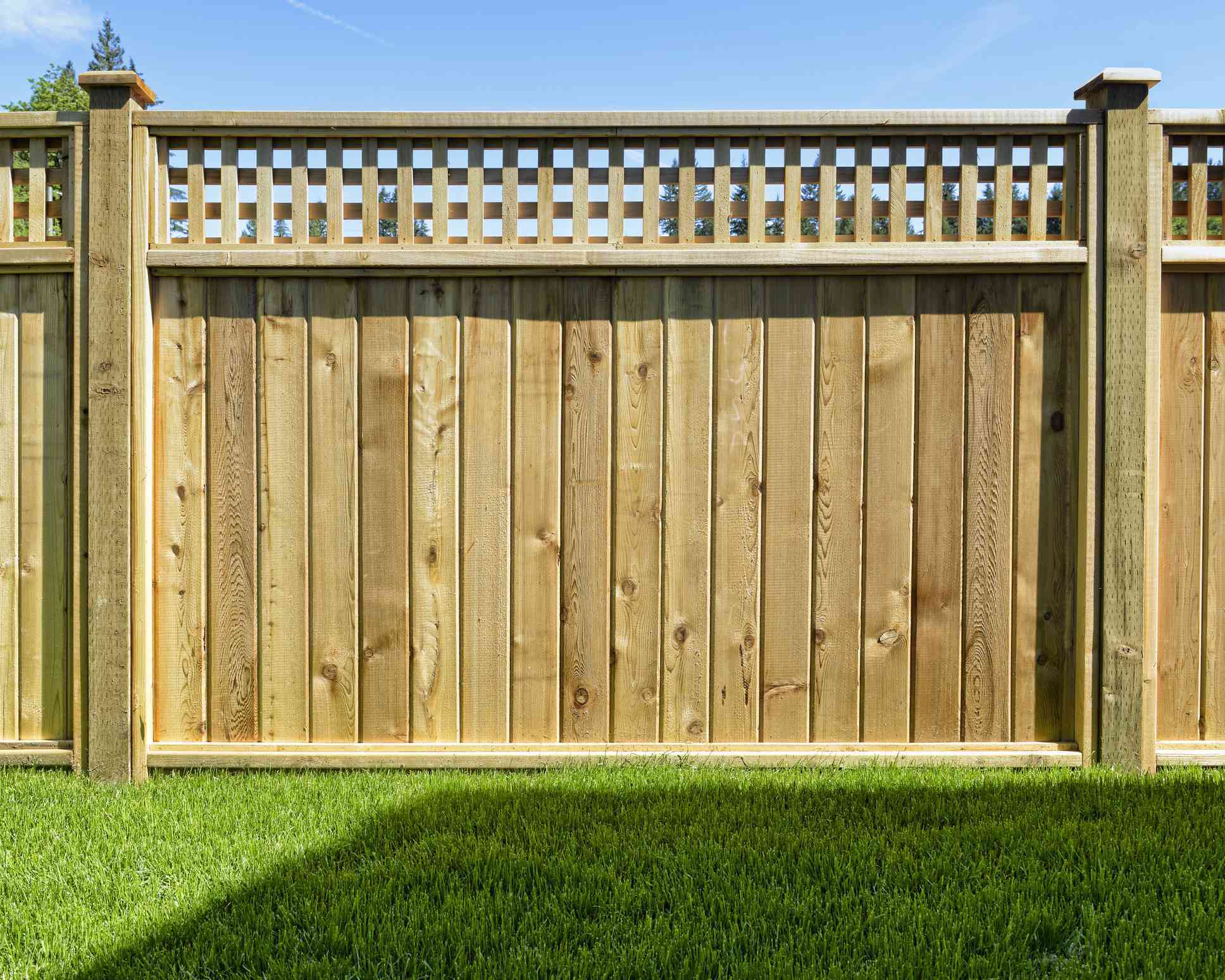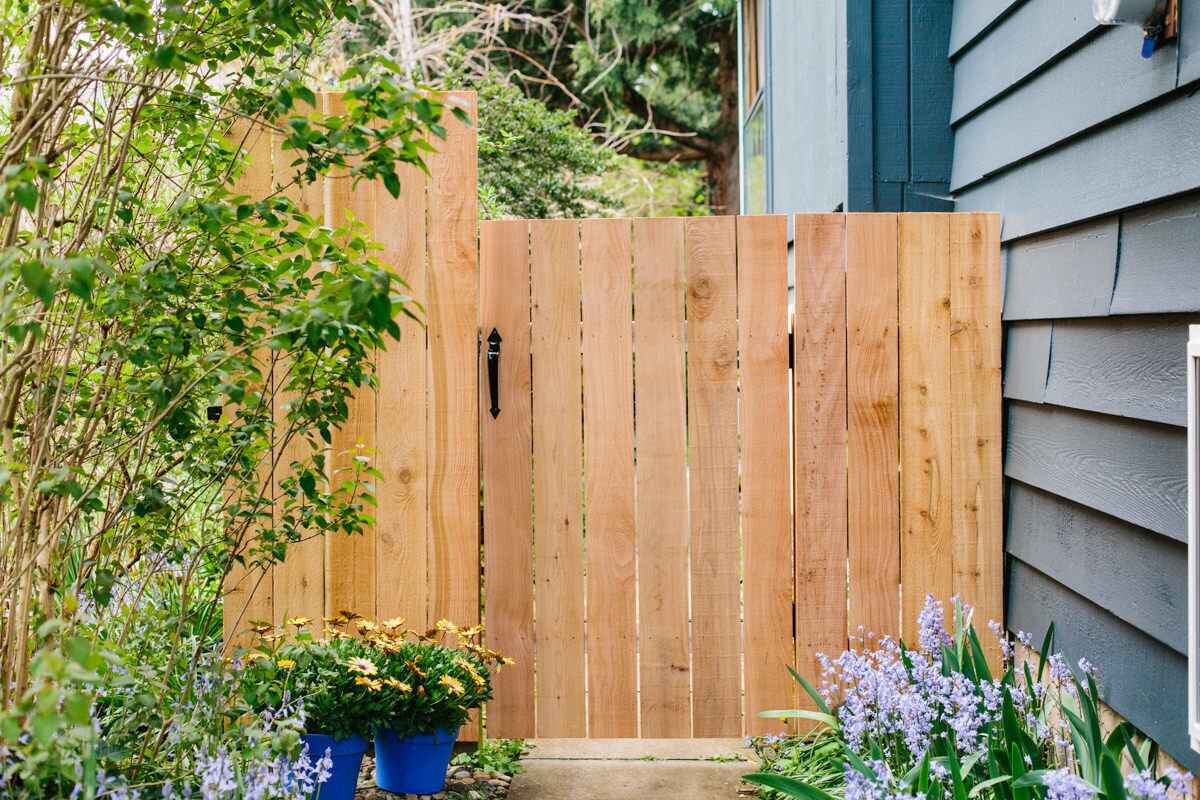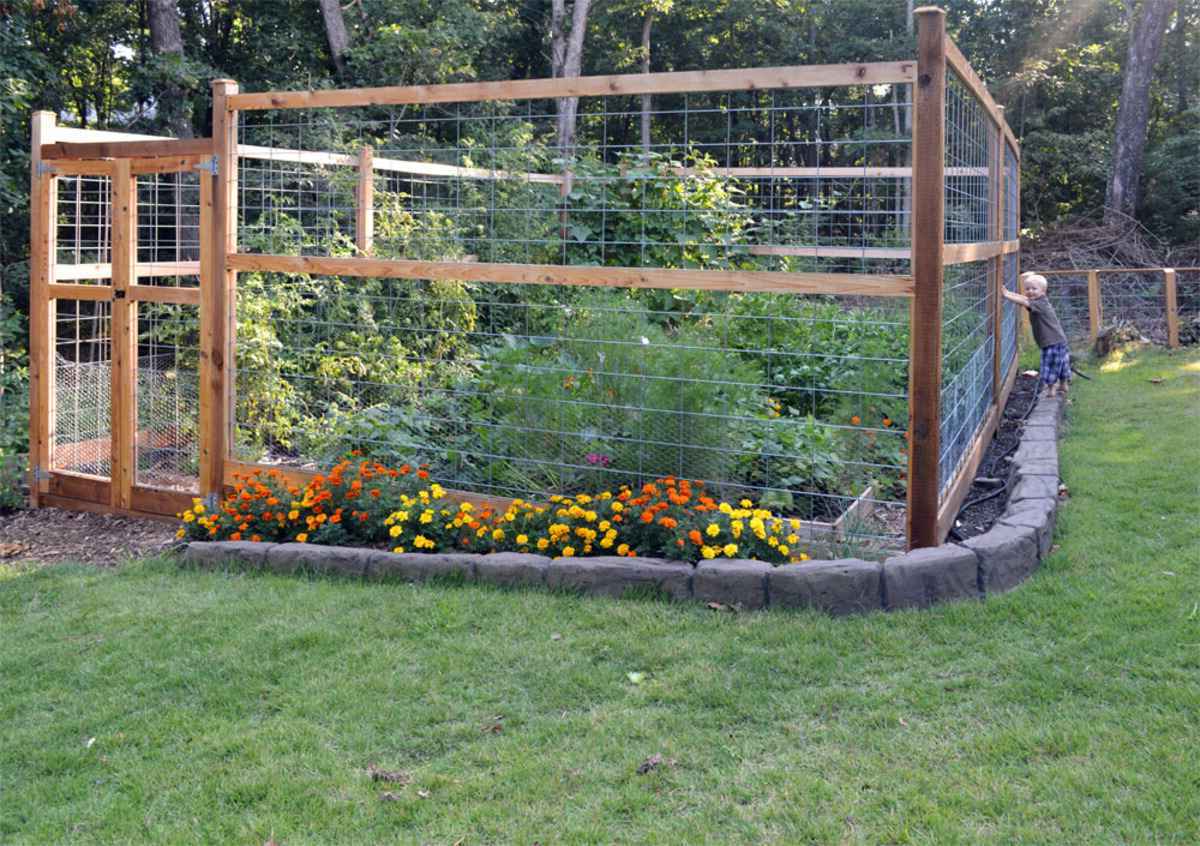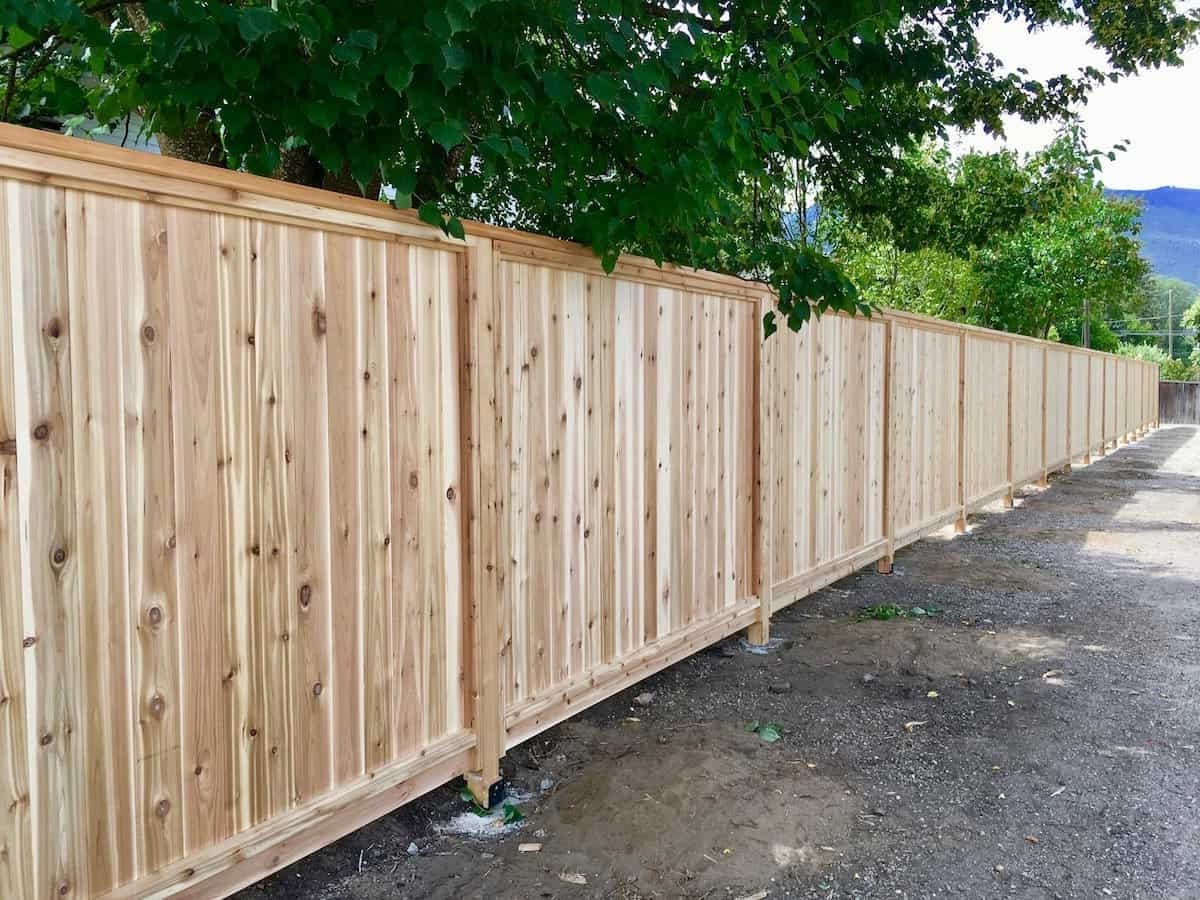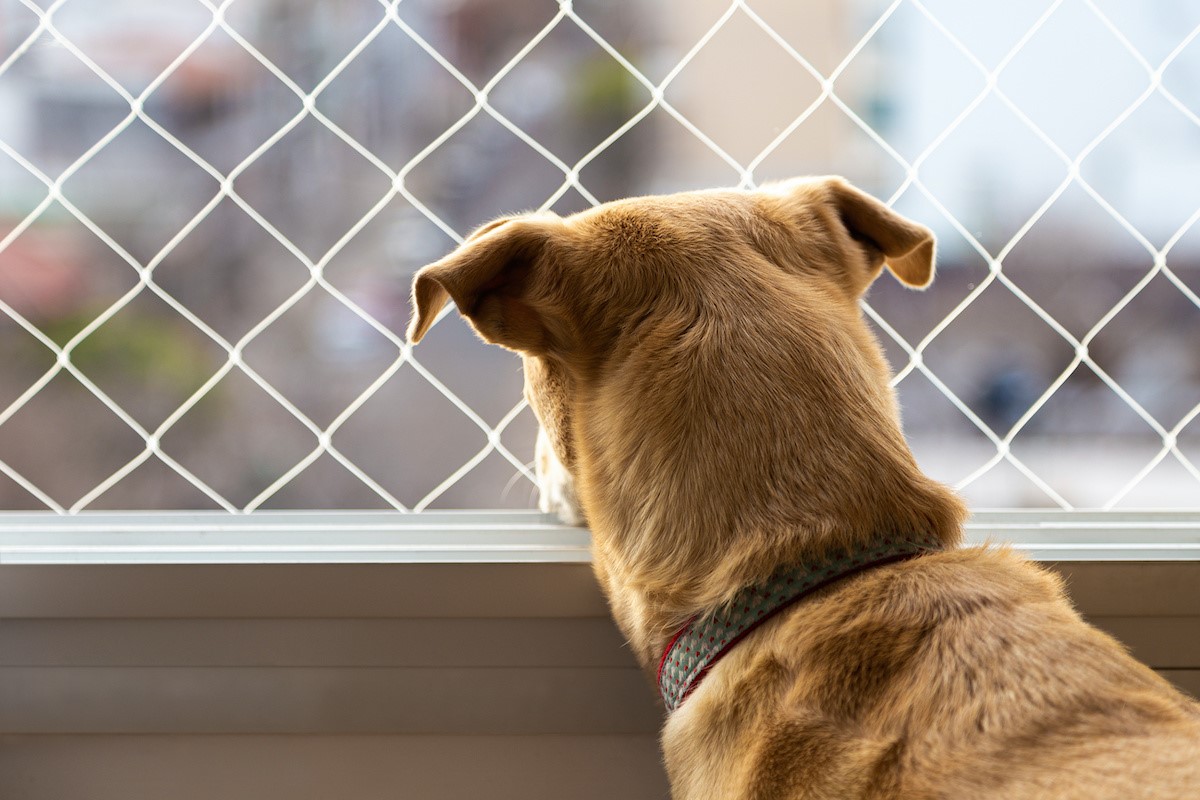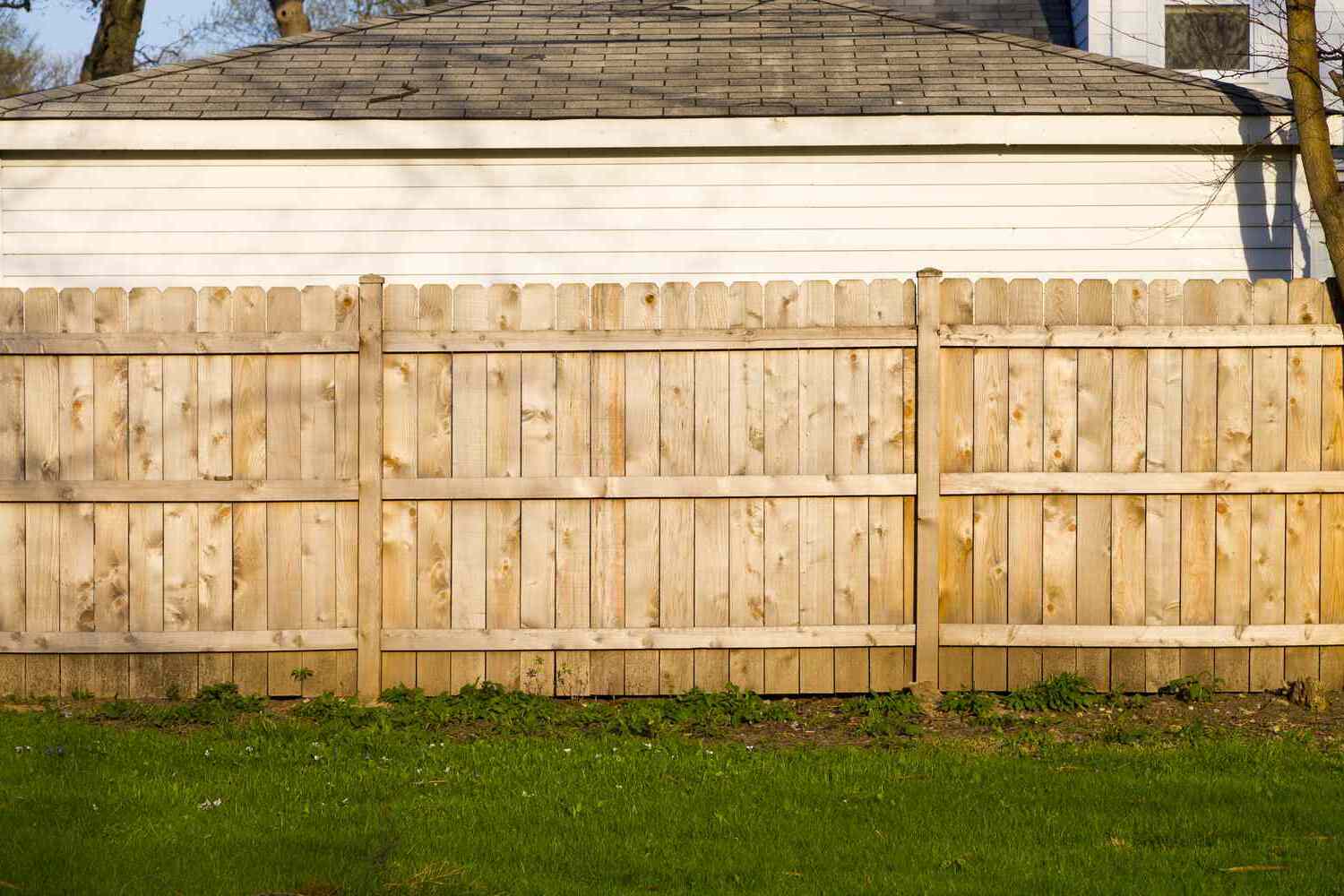Home>Create & Decorate>DIY & Crafts>How To Build A Horse Fence
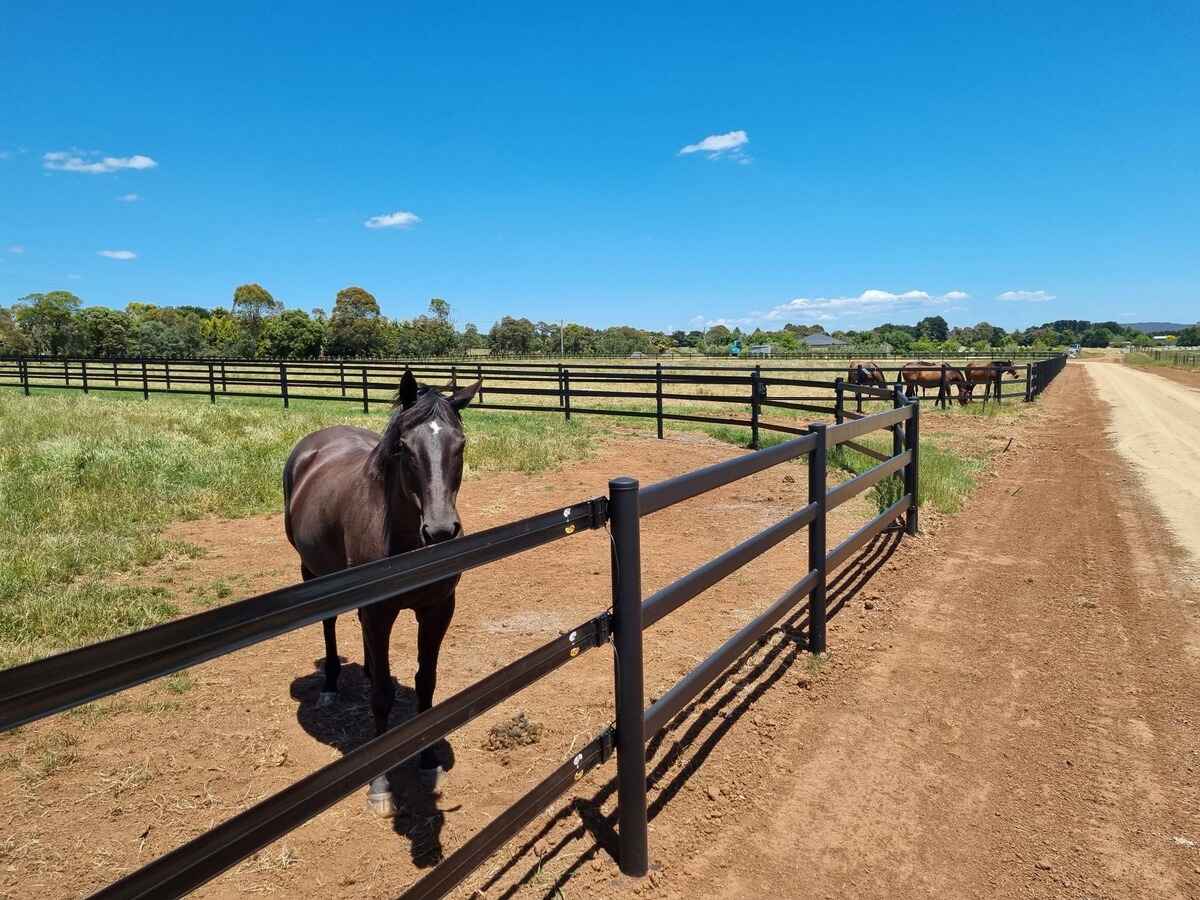

DIY & Crafts
How To Build A Horse Fence
Published: April 26, 2024

Content Creator specializing in woodworking and interior transformations. Caegan's guides motivate readers to undertake their own projects, while his custom furniture adds a personal touch.
Learn how to build a sturdy and reliable horse fence with our DIY & Crafts guide. Get step-by-step instructions and expert tips for a successful project.
(Many of the links in this article redirect to a specific reviewed product. Your purchase of these products through affiliate links helps to generate commission for Twigandthistle.com, at no extra cost. Learn more)
Introduction
So, you've decided to build a horse fence. Whether you're a seasoned equestrian or a first-time horse owner, building a horse fence is an essential part of keeping your horses safe and secure. A well-built fence not only provides a boundary for your property but also ensures the safety of your horses and gives them the freedom to roam and graze. In this article, we'll guide you through the process of building a horse fence from start to finish, covering everything from planning and material selection to installation and maintenance. Let's get started on creating a safe and functional space for your equine companions!
Read more: How To Build A Picket Fence
Planning Your Horse Fence
When it comes to planning your horse fence, there are several key factors to consider to ensure the safety and well-being of your horses. Here are some essential steps to take when planning your horse fence:
-
Determine the Perimeter: Start by identifying the perimeter of the area where you want to build the fence. Consider the size of the pasture and the number of horses you plan to accommodate. This will help you determine the amount of materials needed and the overall layout of the fence.
-
Understand Horse Behavior: Take into account the behavior of horses when planning your fence. Horses are known to be curious and sometimes mischievous animals, so it's important to build a fence that can withstand their natural tendencies to lean, scratch, and chew on the fence.
-
Consider Terrain and Soil Type: Assess the terrain and soil type of the area where the fence will be installed. This will impact the type of materials and construction methods you'll need to use. For example, rocky terrain may require different post installation techniques compared to softer soil.
-
Check Local Regulations: Before proceeding with your fence plans, check local regulations and zoning laws regarding the construction of horse fences. Some areas may have specific requirements or restrictions that you need to adhere to.
-
Plan for Future Expansion: If you anticipate expanding your horse facilities in the future, consider this in your planning. Building a fence with future expansion in mind can save you time and effort down the road.
By carefully planning your horse fence, you can ensure that the end result meets the needs of both you and your horses, providing a safe and secure environment for them to thrive.
Choosing the Right Materials
Selecting the appropriate materials for your horse fence is crucial to its durability and functionality. Here are some key considerations when choosing the right materials for your horse fence:
-
Wood: Wood is a popular choice for horse fencing due to its natural appearance and sturdiness. Oak, cedar, and pine are commonly used for wooden horse fences. When selecting wood, opt for pressure-treated or naturally rot-resistant varieties to ensure longevity.
-
Vinyl: Vinyl fencing offers a low-maintenance alternative to wood. It is durable, resistant to rot and pests, and comes in a variety of styles and colors. While the upfront cost may be higher, the long-term savings on maintenance make vinyl a cost-effective option.
-
Electric Fencing: Electric fencing can be an effective choice for creating temporary enclosures or dividing pastures. It provides a psychological barrier for horses and is relatively easy to install. However, it should be used in conjunction with other types of fencing for permanent boundaries.
-
Wire Mesh: Woven wire or welded wire mesh fencing is suitable for containing horses and preventing them from getting their hooves or heads caught. It is important to choose a mesh with small enough gaps to prevent injury.
-
Posts: The choice of posts is equally important. Treated wooden posts, steel T-posts, or vinyl posts are common options. Consider the soil type and environmental factors when selecting posts to ensure they can withstand the elements.
-
Fasteners and Hardware: Quality fasteners and hardware are essential for securing the fence components. Stainless steel or galvanized hardware is recommended to prevent rust and corrosion.
By carefully considering the pros and cons of each material and assessing your specific needs, you can choose the right materials for your horse fence that will provide a safe and secure environment for your equine companions.
Setting Up the Fence Posts
Setting up the fence posts is a critical step in ensuring the stability and longevity of your horse fence. Here's a detailed guide on how to properly set up the fence posts:
-
Marking the Post Locations: Begin by marking the locations where the fence posts will be installed along the perimeter of the fence. Use stakes and string to create a straight and uniform line for the posts.
-
Digging Holes: Using a post hole digger or an auger, dig holes for the fence posts at regular intervals. The depth and diameter of the holes will depend on the type of soil and the chosen post material. As a general rule, aim for a depth that allows for at least one-third of the post to be buried for stability.
-
Installing the Corner and End Posts: Start with the corner and end posts, as these are crucial for defining the boundaries and providing support for the fence. Ensure that these posts are set securely and aligned properly to maintain the straightness and tension of the fence.
-
Setting the Line Posts: Once the corner and end posts are in place, proceed with setting the line posts along the length of the fence. Use a level to ensure that each post is plumb and straight before backfilling the holes with soil.
-
Securing the Posts: After placing the posts in the holes, backfill the holes with soil, tamping it down firmly to secure the posts in place. Consider using concrete for added stability, especially in areas with soft or sandy soil.
-
Allowing for Proper Spacing: Maintain consistent spacing between the posts to ensure the structural integrity of the fence. The spacing will depend on the type of fencing material and the terrain. Refer to the manufacturer's recommendations for the ideal spacing.
-
Bracing the Corners and Ends: To reinforce the corners and end posts, install bracing to prevent them from leaning or shifting over time. This is particularly important for wooden posts and in areas prone to high winds or heavy loads.
By following these steps and paying attention to the details of setting up the fence posts, you can establish a solid foundation for the rest of the horse fence installation process. Properly installed fence posts are essential for the overall stability and functionality of the fence, ensuring the safety and containment of your horses.
Installing the Rails and Wire
Once the fence posts are securely in place, the next step is to install the rails and wire to complete the structure of the horse fence. This process involves attaching the horizontal rails and securing the wire or mesh to create a safe and effective enclosure for your horses. Here's a detailed guide on how to install the rails and wire for your horse fence:
-
Attaching the Rails: Begin by attaching the horizontal rails to the fence posts. The number of rails will depend on the type of fencing and the height of the fence you desire. For wooden fences, use galvanized nails or screws to secure the rails to the posts. Ensure that the rails are evenly spaced and level to maintain the structural integrity of the fence.
-
Choosing the Right Wire or Mesh: If you're using wire or mesh fencing, carefully select the appropriate type that is suitable for containing horses. Ensure that the wire or mesh has small enough gaps to prevent horses from getting their hooves or heads caught. Additionally, consider the tensile strength and durability of the wire to withstand the pressure exerted by the horses.
-
Installing the Wire or Mesh: Once the rails are in place, install the wire or mesh by attaching it to the rails and securing it to the posts. Use fencing staples or clips to fasten the wire or mesh, ensuring that it is taut and free of sags or gaps. Pay special attention to the bottom section of the fence to prevent horses from pushing through or getting tangled.
-
Tensioning the Wire: For wire fencing, proper tensioning is crucial to maintain the strength and stability of the fence. Use a fence stretcher or come-along to apply tension to the wire, ensuring that it is securely fastened to the posts and rails. Periodically check the tension of the wire, especially during temperature changes, to prevent sagging or loosening.
-
Adding Electric Components (Optional): If you opt for electric fencing, follow the manufacturer's instructions for installing the electric components. This may include attaching insulators to the posts and running the electric wire along the fence. Be sure to test the electric components to ensure they are functioning properly before activating the fence.
-
Securing the End and Corner Posts: Pay special attention to securing the wire or mesh around the end and corner posts to prevent it from unraveling or becoming loose. Use additional fasteners or tensioning methods to reinforce these critical areas and maintain the overall stability of the fence.
By following these steps and ensuring the proper installation of the rails and wire, you can create a sturdy and secure horse fence that provides a safe enclosure for your horses. The careful attachment and tensioning of the rails and wire are essential for maintaining the integrity of the fence and ensuring the safety and containment of your equine companions.
Read more: How To Build A Fence
Adding Gates and Entryways
After installing the main structure of the horse fence, the next crucial step is to incorporate gates and entryways to provide convenient access and secure entry and exit points for both horses and caretakers. Here's a detailed guide on how to add gates and entryways to your horse fence:
-
Selecting Gate Types: Begin by choosing the appropriate type of gates for your horse fence. There are various options, including single swing gates, double swing gates, sliding gates, and mesh gates. Consider the size of the opening, ease of operation, and the number of horses using the gate when making your selection.
-
Determining Gate Locations: Identify the strategic locations where gates will be installed along the fence. Common placement includes entry points from pastures to barns, access to riding arenas, and connecting different sections of the property. Ensure that the gate locations provide convenient access while maintaining the overall security of the enclosure.
-
Measuring and Sizing: Accurately measure the width of the gate openings to determine the appropriate size of the gates needed. Consider the clearance required for equipment, such as tractors or trailers, to pass through the gates. Additionally, ensure that the height of the gates is suitable for the horses and any potential obstacles.
-
Installing Gate Posts: Securely install gate posts to support the gates. Gate posts should be set deeper and with additional reinforcement to withstand the frequent opening and closing of the gates. Use sturdy hinges and latches designed for heavy-duty use to ensure the durability and reliability of the gates.
-
Attaching the Gates: Once the gate posts are in place, attach the gates using appropriate hardware and hinges. Ensure that the gates swing freely without obstruction and are aligned properly to prevent dragging or misalignment. For sliding gates, follow the manufacturer's instructions for proper installation and operation.
-
Adding Latches and Locks: Install reliable latches and locks to secure the gates when closed. Choose latches that are easy to operate yet secure enough to prevent accidental opening by horses or unauthorized access. Consider adding a padlock or combination lock for additional security if needed.
-
Incorporating Safety Features: To enhance safety, consider adding features such as spring-loaded hinges, self-closing mechanisms, and smooth edges to prevent injuries to horses and handlers. Additionally, ensure that the gates are visible and easily identifiable to prevent accidental collisions.
-
Customizing Entryways: Customize the entryways with features such as signage, lighting, and landscaping to enhance the aesthetics and functionality of the gates. Clear signage indicating the purpose of the entryway and any specific instructions can help streamline operations and improve safety.
By following these steps and paying attention to the details of adding gates and entryways, you can create functional and secure access points within your horse fence. Well-designed gates and entryways not only facilitate the movement of horses and personnel but also contribute to the overall safety and efficiency of your equine facilities.
Maintenance and Upkeep
Maintaining and upkeeping your horse fence is essential to ensure its longevity, functionality, and the safety of your horses. Regular maintenance helps identify and address any issues promptly, preventing potential hazards and costly repairs. Here's a comprehensive guide on the maintenance and upkeep of your horse fence:
-
Inspecting the Fence Regularly: Schedule routine inspections of the entire fence to check for any signs of damage, wear, or loose components. Look for broken rails, sagging wire, loose fasteners, and damaged posts. Addressing minor issues early can prevent them from escalating into major problems.
-
Repairing and Replacing Damaged Components: Promptly repair or replace any damaged or worn-out components of the fence. This may include replacing broken rails, tightening loose fasteners, and reinforcing weak sections. For wire fencing, mend any tears or breaks to maintain the integrity of the enclosure.
-
Maintaining Ground Clearance: Ensure that the bottom of the fence remains clear of debris, overgrown vegetation, and accumulated soil. Clearing the area around the fence prevents moisture retention, rot, and potential hiding spots for pests.
-
Managing Vegetation: Regularly trim and manage vegetation around the fence line to prevent it from encroaching on the fence. Overgrown plants can exert pressure on the fence, leading to damage and compromising its effectiveness.
-
Applying Protective Treatments: For wooden fences, consider applying protective treatments such as stains, sealants, or paint to shield the wood from moisture, UV exposure, and pests. Regularly inspect the condition of the protective coatings and reapply them as needed.
-
Addressing Soil Erosion: Monitor the areas around the fence for signs of soil erosion, especially during heavy rainfall or flooding. Implement erosion control measures such as adding gravel, mulch, or retaining walls to prevent soil erosion from compromising the stability of the fence.
-
Checking Electric Components (If Applicable): If your fence includes electric components, regularly test the functionality of the electric wires, insulators, and energizers. Ensure that the voltage levels are within the recommended range and that the system is free of faults or shorts.
-
Winter Preparations: Prior to the winter season, take measures to prepare the fence for harsh weather conditions. This may include reinforcing weak sections, protecting exposed components, and ensuring that gates and latches are functioning properly despite freezing temperatures.
-
Securing Gate Hardware: Regularly inspect and maintain the hardware, hinges, and latches of the gates. Lubricate moving parts to prevent rust and ensure smooth operation. Tighten any loose hardware to prevent sagging or misalignment.
-
Documenting Maintenance Records: Keep a detailed record of all maintenance activities, repairs, and inspections. This documentation can help track the condition of the fence over time, identify recurring issues, and plan for future maintenance needs.
By following these maintenance practices and staying proactive in the upkeep of your horse fence, you can ensure that it remains in optimal condition, providing a secure and reliable enclosure for your horses. Regular maintenance not only safeguards the well-being of your equine companions but also extends the lifespan of your investment in the horse fence.
Conclusion
In conclusion, building a horse fence is a significant undertaking that requires careful planning, selection of appropriate materials, precise installation, and ongoing maintenance. By following the comprehensive guide provided in this article, you can create a safe, secure, and functional enclosure for your horses. From planning the perimeter and understanding horse behavior to selecting the right materials, setting up the fence posts, installing the rails and wire, adding gates and entryways, and maintaining the fence, each step plays a crucial role in ensuring the well-being of your equine companions.
Remember, a well-constructed horse fence not only provides containment but also contributes to the overall safety and happiness of your horses. By investing time and effort into the construction and maintenance of your horse fence, you can create a space where your horses can thrive, roam, and graze while giving you peace of mind. Whether you're a seasoned equestrian or a first-time horse owner, the knowledge and skills gained from building a horse fence will serve you and your horses well for years to come.

